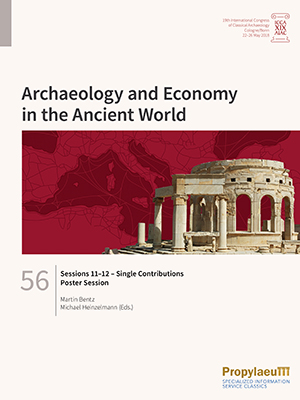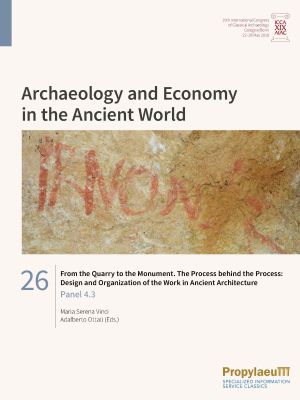Atienza Fuente, Javier
Sessions 11–12, Single Contributions – Poster Sessions
Economic aspects permeate all areas of public and private life in ancient societies, whether in urban development, religion, art, housing, or in death. Research on ancient economies has long played a significant role in ancient history. Increasingly in the last decades, awareness has grown in archaeology that the material culture of ancient societies offers excellent opportunities for studying the structure, performance, and dynamics of ancient economic systems and economic processes. Therefore, the main objective of this congress was to understand economy as a central element of classical societies and to analyse its interaction with ecological, political, social, religious, and cultural backgrounds. The theme of the congress was addressed to all disciplines that deal with Greco-Roman civilization and their neighbouring cultures from the Aegean Bronze Age to the end of Late Antiquity.
In this collective volume, single contributions from sessions 11 and 12 deal with digital topics such as computational approaches and 3D documentation in archaeology and building research. On the other hand, the studies include topics on ancient sculptures and sanctuaries as well as the rituals associated with them.
Furthermore, the numerous transcribed posters which have been presented and discussed during the congress week in the context of a poster session are published in this volume.
From the Quarry to the Monument. The Process behind the Process: Design and Organization of the Work in Ancient Architecture: Panel 4.3
In the complex economic and constructive system of the erection of a building, the planning and organizational aspects of the work represent the first fundamental steps towards reaching a satisfactory final product. Skilled workers are a crucial element of this process, as they have the technical knowledge of the quarrying and building processes that guarantee a successful outcome at the building site (cantiere di costruzione).
This volume aims to explore ancient construction, working procedures and the transmission of technical expertise by skilled workers. Covering different chronological ranges and geographical areas, it focuses on two main subjects: quarry marks or notae lapicidinarum and carving lines for planning architecture and artefacts. They are two aspects of the three-dimensional materialization of the plan and the organizational processes within the building activities. Quarry and mason’s marks are a kind of building material ‘tracking code’ from the extraction point to its final placement. The carving lines represent guidelines useful for the building’s planning and the positioning of stone and marble elements. This volume is a first attempt at contributing with original and innovative thought on the networking of workshops, linking quarrying and building activities in ancient world.








